Adding a Generic Entity Template
The Generic Entity template lets you create additional data entities that you need beyond the built-in data entities. You can then link the Generic entities to other entities in a manner that represents the functional linkage between them.
For example, you can create an entity of Medical Expertise and an entity of Hospital Departments, and link both of these to one another as well as linking Clinicians to each of them. You could also create an entity of a file that can be linked to the device template.
In the image below, Domains, Departments and Department Expertise are all generic entities that are linked to one another and each is linked to one or more caregivers.
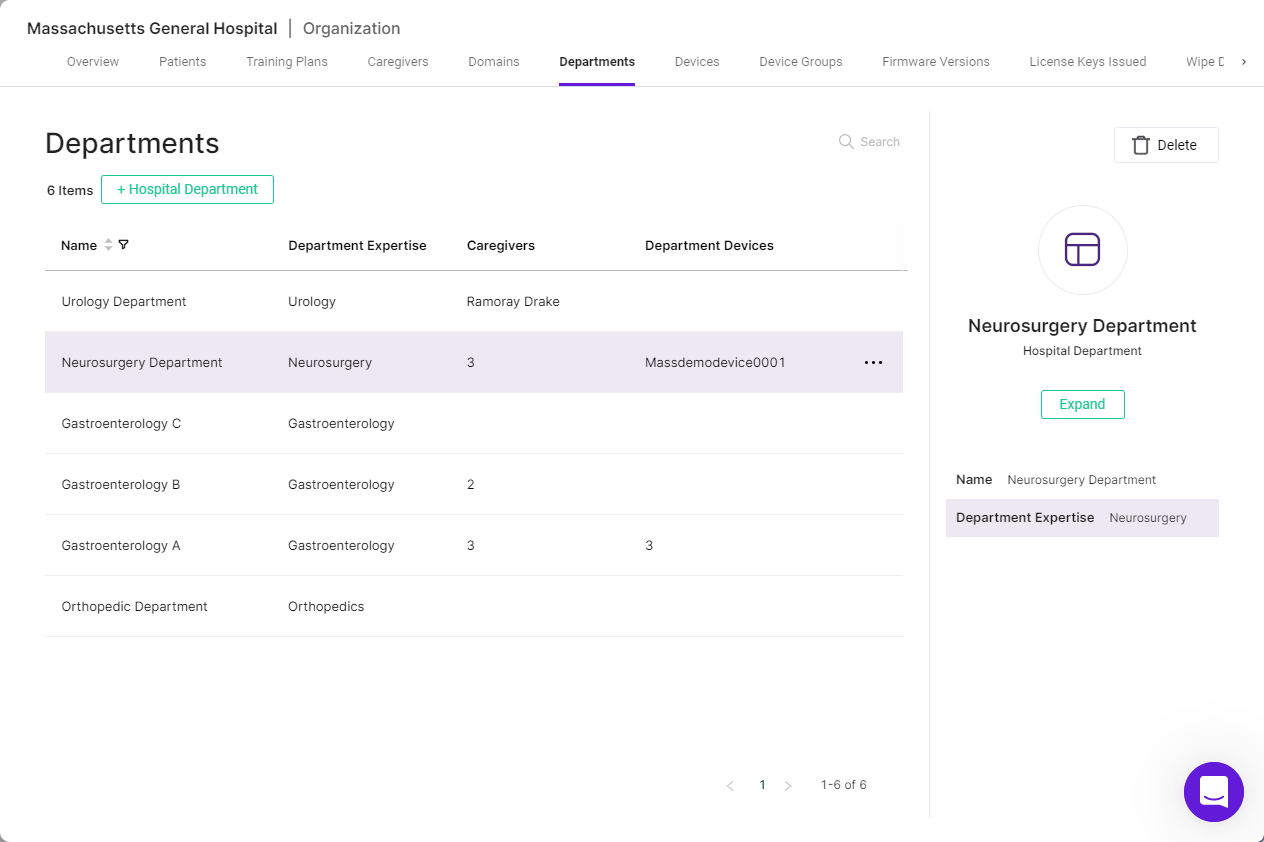
The use of the Generic Entity template allows different Generic Entity types to be created when the standard templates (Device, Organization, Caregiver, Patient, Organization User) cannot fulfil that need (for example, non adherence, device alert, hospital department, device group, etc.).
Defining attributes within Generic Entities enables the system to be taught what attributes and capabilities are required for each Generic Entity type.
Follow the procedure below to add a new Generic Entity template.
Step 1 - Templates List
- Launch the BioT Console.
The console opens on the Templates list.
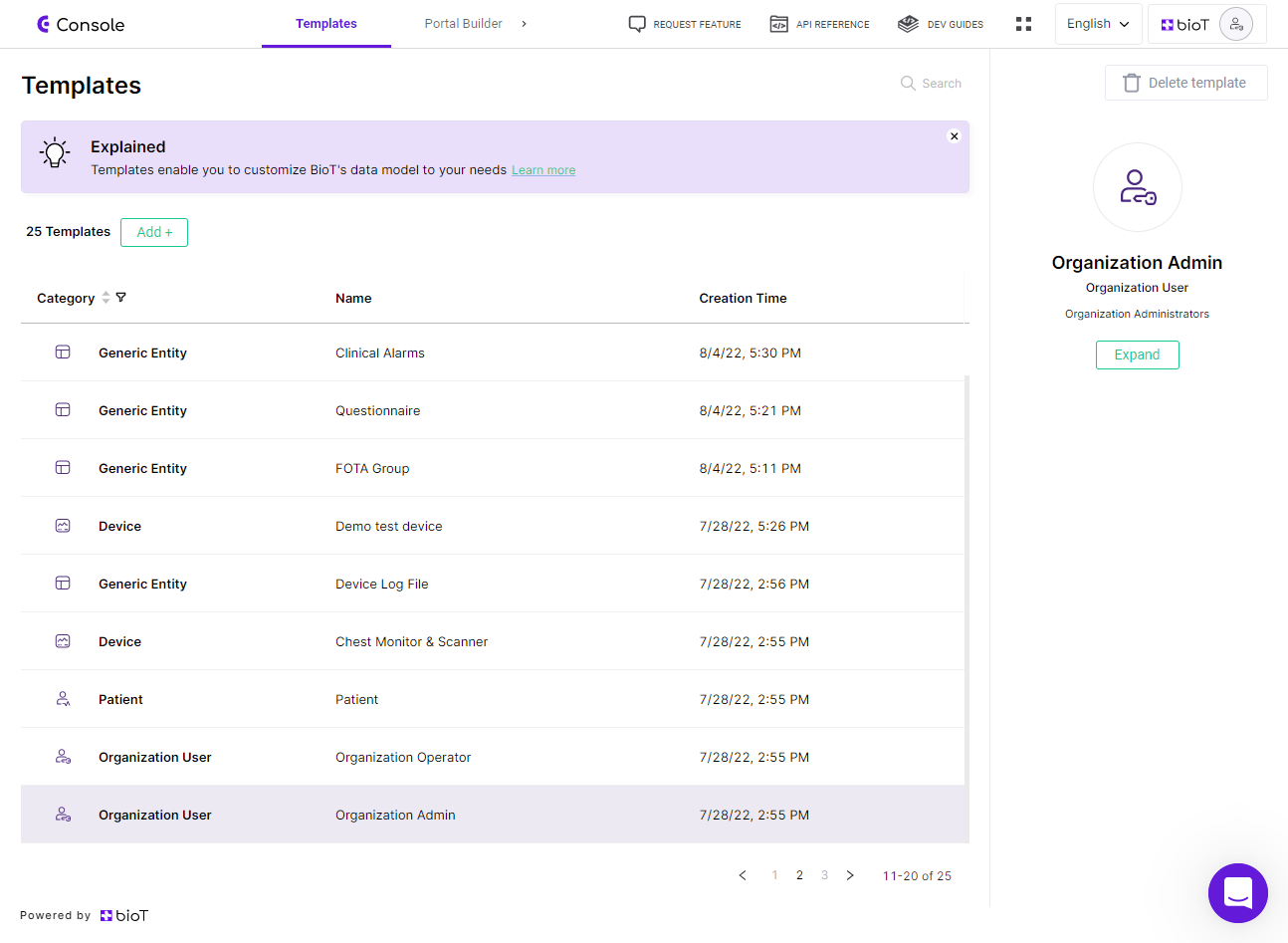
- From the Templates tab, click Add+.
- Select the Generic Entity template type from the dropdown menu.
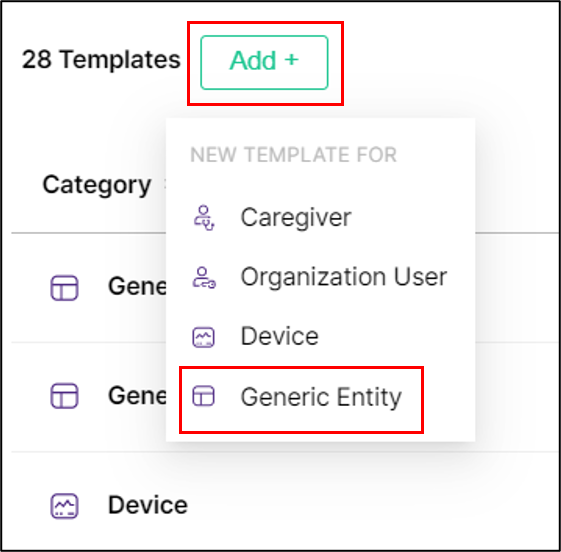
Add Generic Entity Template
Step 2 - Overview Tab
- Add a name and optional description for the template. Use a template name that reflects the Generic Entity type (for example, "Medical Expertise").
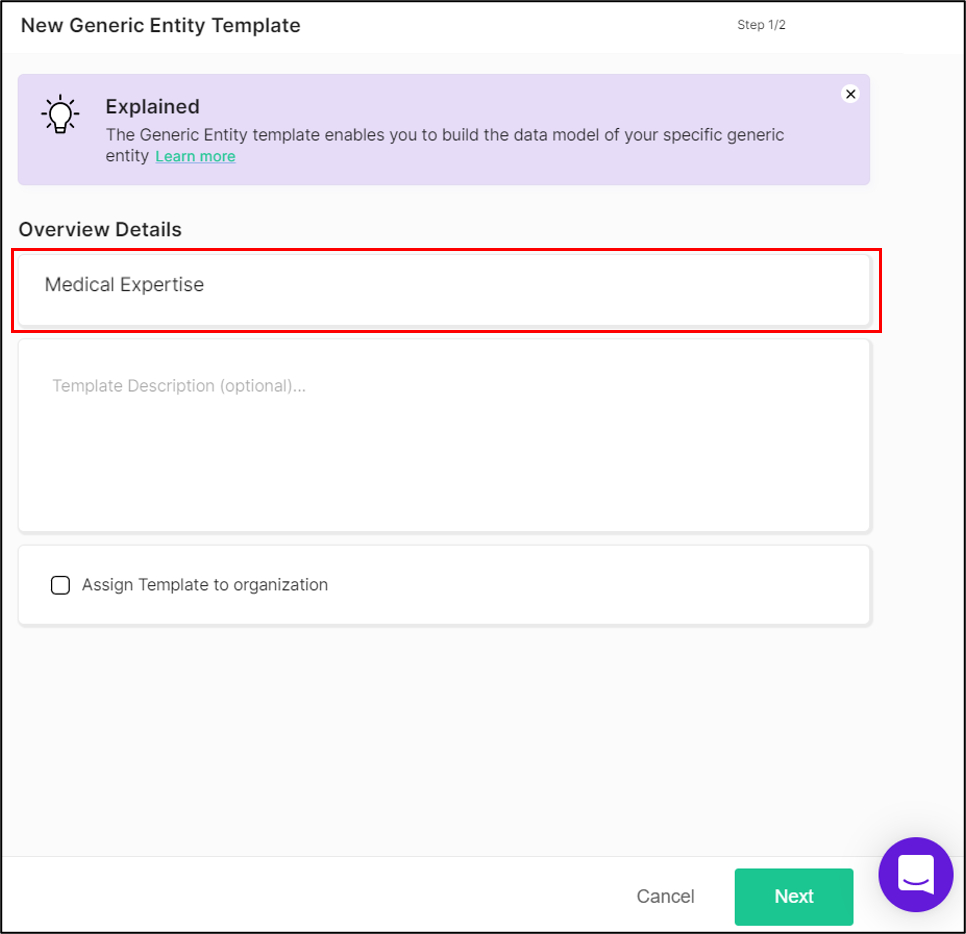
New Generic Entity Template Overview
- Click Next.
Step 3 - General Fields
The General fields page is displayed with the list of built-in attributes.
General attributes include data that users want to keep about the Generic Entity. For example, one of the General attributes may be an Expertise attribute which describes the medical fields a clinician specializes in.
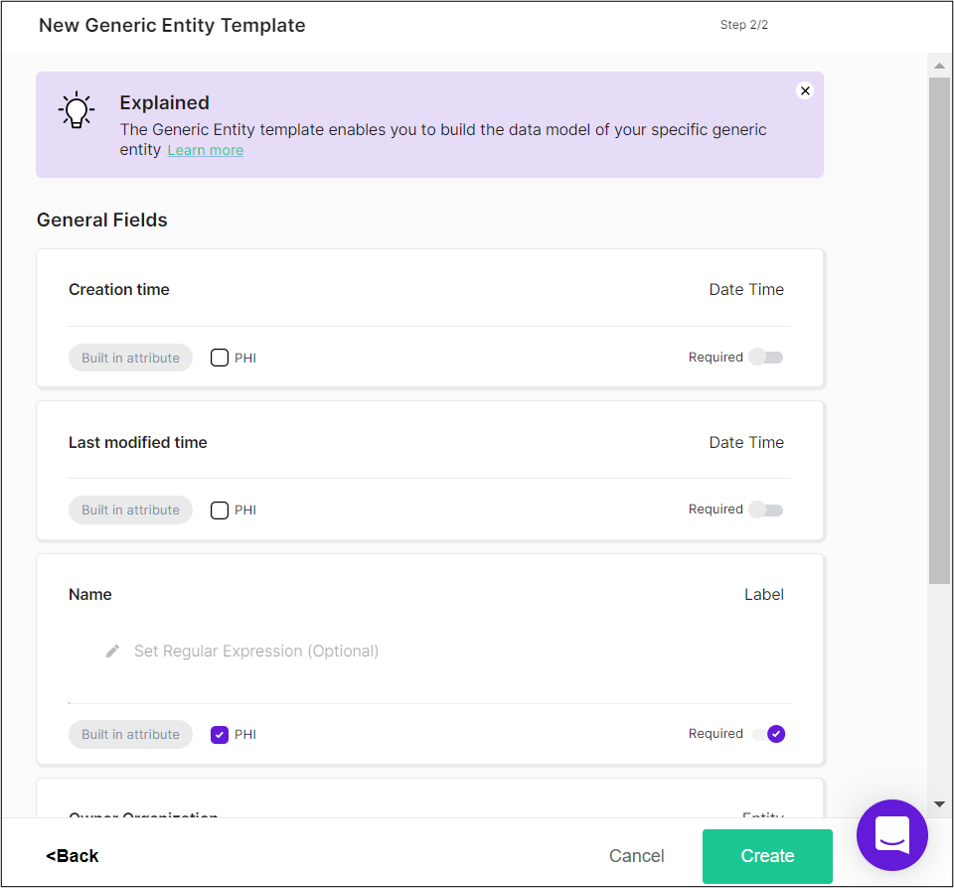
Built-In Regular Fields
Change any details in the built-in general fields as needed, or click the trash can icon to remove (or disable in case of built-in attributes) any unneeded field from the template.
The following built-in General attributes appear in all new Generic Entity templates:
Creation Time
Attribute Type: Date Time
The time and date when the Generic Entity was created.

Last Modified Time
Attribute Type: Date Time
The time and date when the Generic Entity was most recently modified.

Name
Attribute type: Name
The full name of the Generic Entity.

Owner Organization
Attribute type: Entity
Specifies the organization the Generic Entity is associated with.
To enable the option of creating a Global Entity, the field must be configured as not required.

Step 4 - Add General Field
If your users need more attributes to keep about the Generic Entity, scroll to the bottom of the General attributes list and:
- Click + Add General Field.

- Click Please choose a name and enter a name for the new field.
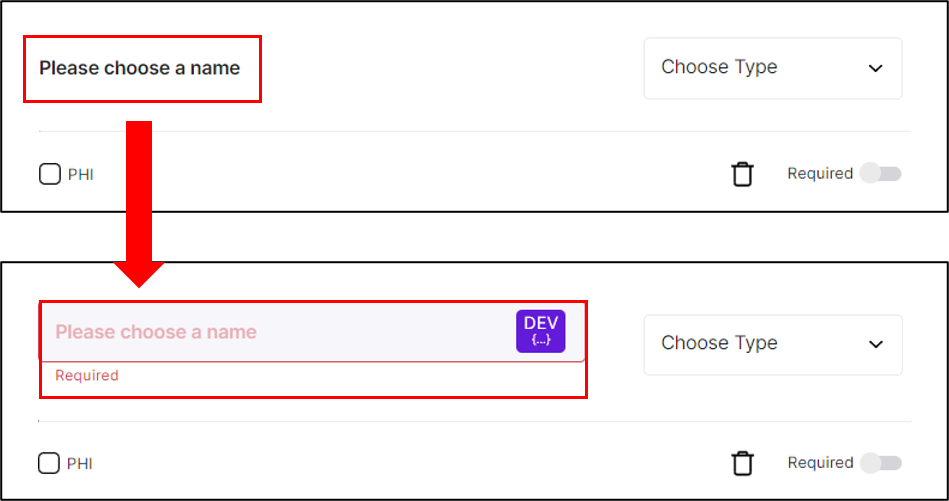
Choosing a Field Name
- Click the Choose Type dropdown and select the attribute type from the list (see Attribute Types for a full list of types and their parameters).
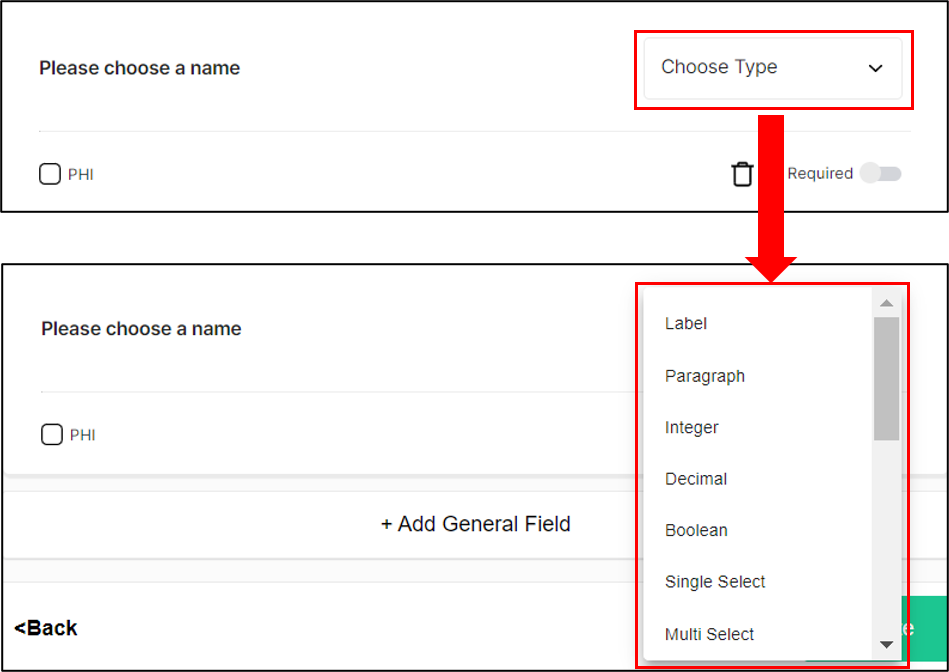
Choose Attribute Type
Entities can be linked to other entities with the attribute Choose Type: Entity. For an entity such as a device, which has several template options available, it is necessary to define whether this new entity is linked to all the types or just to a specific type.
For more information about the General Field Attribute Entity, including the RSAN attribute that defines how the linked in entity is viewed, see Entity in Attributes Types.
- Complete the remaining parameters for the Attribute Type.
- For fields you want to define as obligatory, select Required.

For a field marked as Required, you will be asked to set a Default value. A default value is used when users want to edit the data of an existing generic entity, but there are some details they cannot enter, due to lack of knowledge or any other reason. In this case, they can leave the pre-defined default value and save their changes.
NoteDefault values can be used only when editing an existing generic entity. When users create a new generic entity, they must fill in all required fields with actual values.
For example, let's add a new general field for the Questionnaire generic entity, called Questionnaire Version, and mark it as a required field. This means that if users want to update a questionnaire's details, they are required to enter a version number, however, this information is not always available. In this case, they can leave the pre-defined default value - N/A, as demonstrated below.
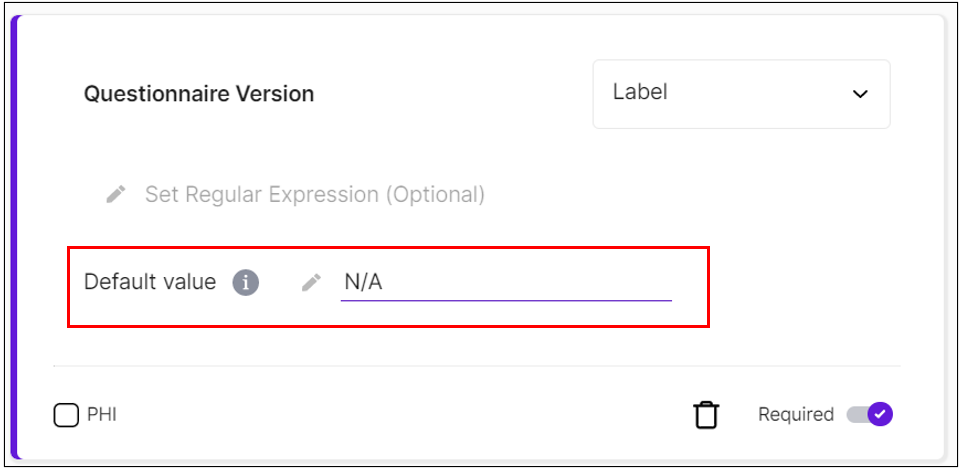
Step 5 - Finish Template
When you have finished adding fields, click Create. The template is created, and you return to the template list.
NoteYou can click Cancel at any time to discard the template and return to the templates list.
Updated about 1 month ago
